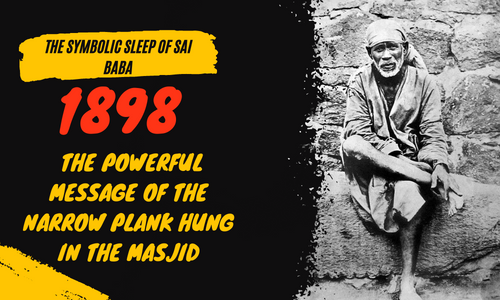Sai Baba of Shirdi was known for his simple and ascetic lifestyle. He lived in a dilapidated mosque or masjid, where he spent most of his time in prayer and meditation. Despite his lack of material possessions, Baba was revered by his devotees for his wisdom and compassion.
One of the most remarkable things about Baba’s life in the masjid was the way he slept. He would often sleep on a narrow plank that was hung from the rafters by rags. The plank was so narrow that it could barely accommodate his body, and it was suspended several feet above the ground.
Despite the discomfort and inconvenience of this arrangement, Baba continued to sleep on the plank for many years. His devotees marveled at his ability to endure such hardship, and many of them tried to emulate his asceticism by sleeping on the ground or on hard surfaces.
Baba’s choice to sleep on a narrow plank was symbolic of his detachment from material comforts and his commitment to a life of spiritual discipline. It was a testament to his unwavering faith and his willingness to endure hardship for the sake of his spiritual goals.
Even after Baba’s passing, the narrow plank remained a powerful symbol of his life and teachings. It was seen as a tangible reminder of the importance of simplicity, humility, and devotion in the pursuit of spiritual growth.
Today, the plank is preserved as a sacred artifact in the Shri Sai Baba Sansthan Trust in Shirdi. It serves as a powerful symbol of Baba’s enduring legacy and his profound impact on the lives of his devotees.

2 thoughts on “The Symbolic Sleep of Sai Baba: The Powerful Message of the Narrow Plank Hung in the Masjid”